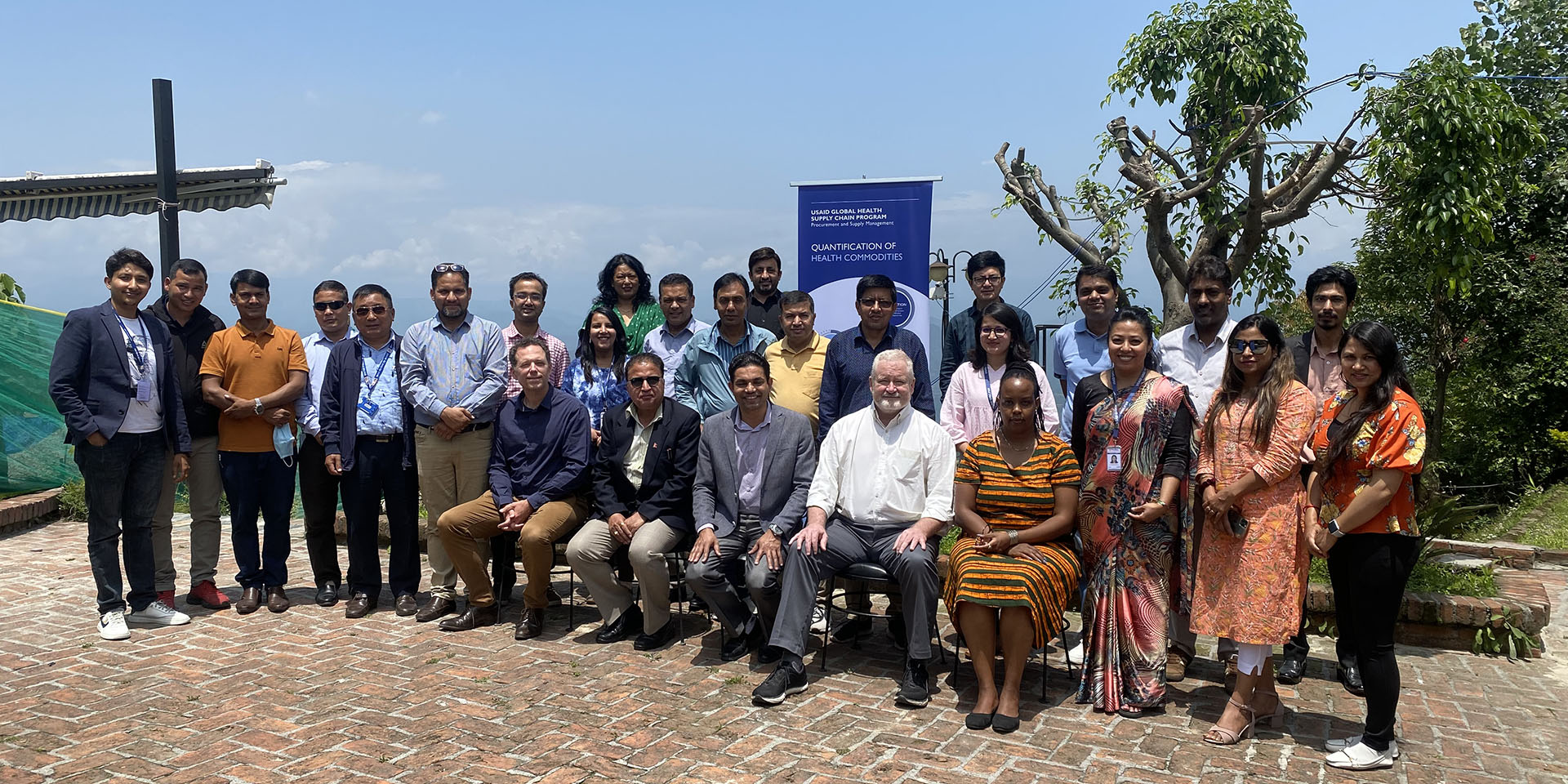
Forecasting and supply planning (FASP) combines data from past supply plans with insights about demand, to help make the best decisions for procurement. In Nepal, the USAID Global Health Supply Chain Program-Procurement and Supply Management (GHSC-PSM) project supported a three-day workshop on National Consensus Forecasting and Quantification of Program Commodities for fiscal year 2023 in May 2022 in Dhulikhel.
Fifty-five people attended the FASP workshop, with 33 coming from divisions and centers of the Department of Health Services under the Ministry of Health and Population; including Family Welfare; Epidemiology and Disease Control; Curative Service Division; the National Tuberculosis Control Center, the National Center for AIDS and STI Control, and the National Public Health Laboratory.
Participants built consensus around the appropriate methods to use for forecasting different health commodities, following three steps:
1. Preparation: A committee of program, finance, procurement, epidemiology, and demography experts provided support to the divisions and centers in collecting required data, sharing templates and staff orientation. GHSC-PSM assisted in template development and orienting the preparation committee to FASP.
2. Forecasting: Using the templates provided by the preparation committee, various sections of government supporting public health prepared draft reports using three different forecasting methods:
- Consumption: Used for family planning/reproductive health (FP/RH) commodities and essential drugs, this method uses historical data on actual product quantities dispensed to patients at service delivery points within a specified period.
- Morbidity: This method estimates the number of specific diseases that occur in a commonly defined subset of a population, usually incidence or prevalence of a particular disease.
- Demography: Often used for vaccines, this method analyses the number and characteristics of a population, growth trend data, and the percentage of target populations among total population.
Each section shared draft forecasts, and consensus on the methodologies was built among the participants.
3. Supply Planning: The forecasting provided average annual and monthly consumption for each of the commodities and drugs to be procured from the federal level. Based on average monthly consumption data, opening balance, shipment information, and the minimum and maximum value for month of stock on hand, the sections and centers calculate the quantity of procurement for each commodity.
The Logistics Management and Family Health Divisions first conducted their quantification exercises for FP/RH commodities in 1999-2000. The Maternal Child Health and Nutrition (MCHN) commodities were gradually added to the list of commodities for forecasting. Presently, in addition to FP and MCHN commodities, vaccines and essential drugs for HIV/AIDS, malaria, leprosy, and tuberculosis are also included in the quantification exercise. With new federal structures, quantification exercises are also extended to provinces and local level governments.
Participants in the workshop made several recommendations to improve data quality for the next FASP exercise after discovering poor data quality for some commodities. These recommendations included:
- Taking a bottom-up approach for quantification, starting from local-level governments to provinces and finally to the center.
- Compiling and approving quantifications from respective sources before submitting upward.
- Increasing the capacity at all levels of government to conduct forecasting and supply planning.
Since 2017, GHSC-PSM has supported the federal and provincial governments in organizing annual quantification workshops and updated quarterly pipeline reports.